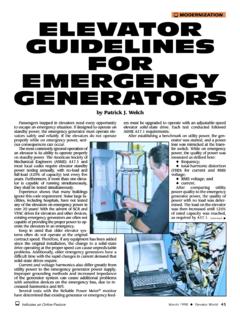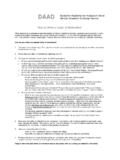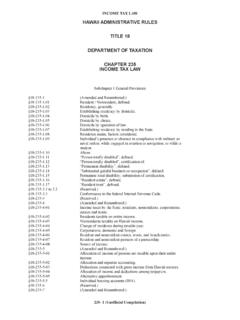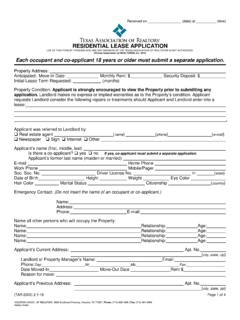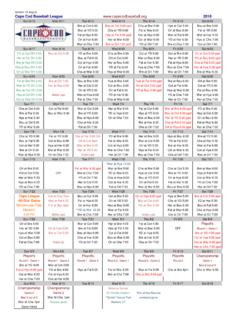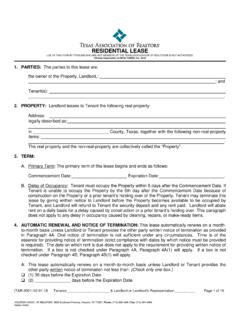Transcription of Power Factor Correction and Harmonic Resonance: …
1 PQ CORNERP ower Factor Correction andHarmonic resonance : A Volatile MixCapacitors may be meant to correct problems,but they can also introduce them if incorrectly specifiedBy Daniel J. Carnovale, , Eaton/Cutler-Hammer16 EC&M June 2003 Industrial and commercial cus-tomers constantly scrutinize theirmonthly electrical usage, lookingfor ways to save money. Installingpower Factor Correction capacitorscan reduce costly penalties im-posed by the utility and help pay for thecapacitors in a relatively short amount oftime.
2 The payback period can be as shortas four to six months for capacitors in-stalled on Power systems in locations likehospitals and paper , you can t indiscriminatelyadd Power Factor Correction capacitors toa system without understanding howtheir presence will affect the system. Vari-able frequency drives (VFDs) for motors,DC Power supplies for computers, elec-tronic ballasts for fluorescent lighting,and other non-linear loads can createharmonics. If you don t consider the ex-istence of these Harmonic sources and theinductive reactance of the existing sys-tem, you ll create the potential for har-monic resonance .
3 The operationof non-linear loads in a Power distribu-tion system creates Harmonic currentsthat flow throughout the Power inductive reactance of that powersystem increases and the capacitive reac-tance decreases as the frequency in-creases, or as the Harmonic order in-creases. At a given Harmonic frequencyin any system where a capacitor exists,there will be a crossover point where theinductive and capacitive reactances areequal. This crossover point, called theparallel resonant point, is where thepower system has coincidental similarityof system impedances.
4 Every system witha capacitor has a parallel resonant resonance causes problemsonly if a source of harmonics exists at thefrequency where the impedances is typically called Harmonic reso-nance. Harmonic resonance results invery high Harmonic currents and voltagesBlown capacitor cans are just one possible outcome of Harmonic Self Correcting Problem? Harmonic resonance is said to be a self correcting problem. Most times capacitorfuses will open, capacitor cans will fail, or the source transformer fails (Photoabove).
5 Any of these events will lead to the removal of a component from the system,eliminating the resonance condition. However, they re all undesirable results. In abest-case scenario, the electrical control equipment acts CORNERat the resonant frequency. It s extremelyunlikely that these two impedances areexactly identical, but near resonance canbe very damaging as well. If, for example,the parallel resonant point is at the and a source of 5th harmoniccurrent exists on the system, problems arelikely to occur.
6 In short, Harmonic reso-nance can result if both of the followingare true: Harmonic loads, such as AC/DCdrive systems, induction heaters, arcingdevices, switch mode Power supplies, andrectifiers, are operating on the system. A capacitor or group of capacitorsand the source impedance have the samereactance (impedance) at a frequencyequal to one of the characteristic frequen-cies created by the loads. In other words,the system is parallel resonant at a fre-quency equal to one of the harmonicsflowing on the Power , Harmonic resonance is asteady-state phenomenon triggered byan event in which the Harmonic sourcechanges or the source impedance or ca-pacitor size changes, such as if capacitorsare switched on or off in steps.
7 When in-stalling Power Factor Correction capaci-tors, you can estimate the resulting par-allel resonant frequency, or Harmonic or-der, by using the following equation:where hR is the parallel resonant fre-quency Harmonic order, such as the 5thor 7th, MVASC is the source impedancein MVA at the bus of interest, andMVARCAP is the 3-phase rating in MVAof the capacitor example, consider a source imped-ance at a bus of 500 MVA and a capacitorbank rating of 10 MVA. Plugging theseMeasurement TipsWhen you take measurements with a Power quality analyzer, one or more of theharmonic currents will be uncharacteristically high.
8 The characteristic harmonicsnormally decrease as frequency increases the 5th should be higher than the 7th,the 7th higher than the 11th, and so on. Harmonic resonance can be evident in thevoltage measurement, but it may not be as obvious or into this equation yields thefollowing:So the 10 MVA capacitor bank will beresonant with that source impedance atthe 7th Harmonic . If any magnitude of7th Harmonic current flows on the powersystem at that bus, the effect could a practical example, for mostpower systems you can estimate theMVAsc based on the impedance of thenearest transformer upstream of the ca-pacitor often the main service trans-former.
9 For example, a 1,500kVA trans-former with a 5% impedance yields ap-proximately 30 MVAsc ( MVA ).Applying a 250kVAR capacitor results inresonance near the 11th much can your capacitortake? IEEE Standard 18-2002, Standardfor Shunt Power Capacitors, states thatpower capacitors must withstand a maxi-mum continuous rms overvoltage of110% and an overcurrent of 180%, basedon the nameplate rating. This overvolt-age and overcurrent includes both thefundamental frequency and any har-monic contributions.
10 The standard alsostates that the VA rating of the capacitorcan t exceed 135%.Engineers typically recommend pro-tecting a capacitor at 135% of its full loadcurrent. Protection at a higher percentagewill prevent overcurrent protection fromoperating during capacitor can you avoid Harmonic reso-nance? One way to solve the problem isapplying de-tuned Harmonic filters or anappropriately sized capacitor to avoid har-monic resonance . Harmonic filters providethe same 60-Hz reactive compensation ascapacitors, but they re typically designedwith a parallel resonance point below anyexpected harmonics on the system.










